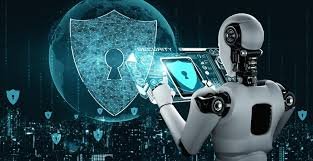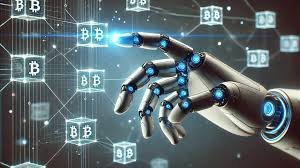The future of technology is unfolding faster than ever. Artificial Intelligence (AI), the Internet of Things (IoT), quantum computing, and automation are transforming every aspect of our world — from business and education to healthcare and entertainment.
However, with this massive digital revolution comes an equally powerful threat: AI security risks. As technology grows smarter, so do cybercriminals. The same algorithms that drive innovation can also be weaponized for attacks, manipulation, and data theft.
This article explores how future technologies are shaping cybersecurity, the threats they bring, and the solutions we must adopt to secure our AI-driven future.

🔹 The Rise of Artificial Intelligence in Technology
AI is no longer a futuristic concept — it’s here and everywhere. From chatbots and recommendation engines to autonomous vehicles and smart homes, AI powers the modern digital ecosystem.
- AI in Business: Companies use machine learning for data analytics, fraud detection, and process automation.
- AI in Healthcare: Predictive algorithms diagnose diseases faster and assist doctors in treatment planning.
- AI in Cybersecurity: AI helps identify unusual patterns, detect threats, and respond to incidents in real time.
While AI improves efficiency and innovation, it also introduces new vulnerabilities that cyber attackers can exploit.

🔹 Understanding AI Security
AI systems rely heavily on data, and if this data is manipulated or corrupted, the AI can make wrong decisions — leading to financial loss, privacy breaches, or even physical harm (in cases like self-driving cars or medical devices).
Key Elements of AI Security:
- Data Integrity: Ensuring that the data used for training AI models is accurate and secure.
- Model Robustness: Making AI models resistant to manipulation or “adversarial attacks.”
- Privacy Protection: Safeguarding user information that AI systems process and store.
- Ethical Governance: Preventing AI misuse in surveillance, disinformation, or biased decision-making.
🔹 Emerging Cyber Threats in Future Technologies
1. Adversarial AI Attacks
Hackers can feed malicious data into AI models to confuse or deceive them. For example, altering an image slightly might trick a facial recognition system into identifying someone incorrectly.
2. AI-Powered Phishing
Cybercriminals are now using AI to craft convincing phishing messages, deepfake voices, or videos that mimic real people — making scams nearly undetectable.
3. Data Poisoning
If an attacker injects false or biased data into an AI training set, it can cause the model to malfunction or behave in harmful ways.
4. Deepfakes & Misinformation
AI-generated deepfake videos and fake news pose serious risks to politics, journalism, and social stability. These can manipulate public opinion or damage reputations instantly.
5. IoT Vulnerabilities
Smart homes, wearable devices, and connected vehicles create vast networks — but many lack strong security controls, making them easy entry points for hackers.
6. Quantum Computing Risks
While quantum computing promises faster problem-solving, it could also break traditional encryption systems, exposing sensitive data worldwide.

🔹 The Role of AI in Cyber Defense
Interestingly, AI isn’t just a threat — it’s also our strongest defense against cybercrime.
AI-driven cybersecurity tools can detect, predict, and respond to attacks faster than human analysts ever could.
🔰 How AI Is Enhancing Cyber Defense:
- Threat Detection: Machine learning identifies suspicious behavior patterns.
- Automated Response: AI can isolate affected systems instantly to stop attacks.
- Predictive Analysis: AI predicts potential vulnerabilities before they are exploited.
- Behavioral Monitoring: Continuous analysis of network traffic to spot anomalies.
AI-based cybersecurity solutions are now a must-have for organizations that handle large volumes of digital data.
🔹 Ethical and Legal Challenges
As AI becomes more integrated into security systems, ethical and legal issues emerge:
- Bias in AI Systems: If an AI model is trained on biased data, it may make unfair or inaccurate judgments.
- Surveillance Concerns: Governments and corporations can misuse AI for mass monitoring.
- Accountability: When AI makes an autonomous decision, who is responsible for its outcome?
- Regulation: The lack of clear AI governance laws makes accountability difficult in cross-border cases.
To create a safe digital future, we must balance innovation with ethics, ensuring AI serves humanity, not harms it.
🔹 Securing the Future: Solutions and Best Practices
1. Robust AI Model Testing
Regularly test AI systems for vulnerabilities and simulate cyberattacks to identify weaknesses.
2. Data Security Frameworks
Use encryption, secure data pipelines, and blockchain technology to ensure data authenticity.
3. Ethical AI Policies
Organizations should adopt transparent, fair, and explainable AI principles.
4. AI + Human Collaboration
Even the smartest AI needs human oversight. A hybrid approach ensures better accuracy and accountability.
5. Quantum-Resistant Cryptography
Prepare for the quantum era with advanced encryption techniques that can withstand quantum attacks.
6. Global Cooperation
Cyber threats know no borders — countries and corporations must collaborate to share intelligence and develop unified cybersecurity standards.
🔹 The Future of AI Security
By 2030, experts predict that AI-driven security systems will manage most digital defenses automatically.
However, the same tools will also be in the hands of criminals, creating an ongoing battle between “good AI” and “bad AI.”
The future of technology will depend on our ability to build trustworthy AI — systems that are secure, transparent, and aligned with human values. Investing in AI security today means protecting innovation tomorrow.

🔹 Conclusion
The digital revolution powered by AI and emerging technologies brings immense opportunity — but also unprecedented risk.
Cybersecurity in the age of future tech is not just about defense; it’s about trust, ethics, and responsibility.
To build a safer future, individuals, businesses, and governments must work together to ensure that AI becomes a shield, not a weapon.
The future of technology depends on the security of its intelligence — and that future starts now.
